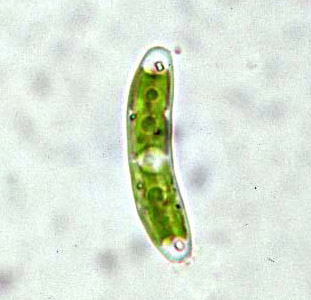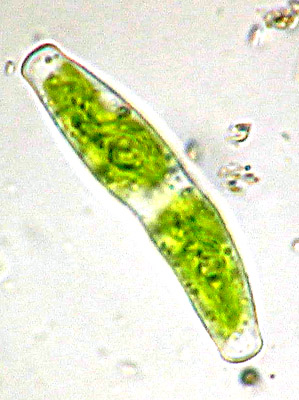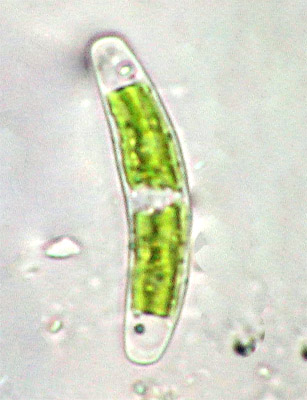|
Desmid of the month
November 2009
Closterium pusillum
Closterium pusillum is readily to be recognized by its small, thick-set cells with broadly rounded to truncate apices. Chloroplasts are bounded at the cell ends by a large, globular vacuole usually holding a single crystal. Cell morphology, in particular length to breadth ratio, is most variable (Brook 1992). Cl. pusillum is a semi-atmophytic species characteristic of wet substrates and ephemeral puddles. In the Netherlands it is widely distributed and, like other desmid species with a comparable way of life, less rare than originally presumed.
Reference:
Brook, A.J., 1992. The desmid Closterium pusillum Hantzsch from two terraqueous habitats, with observations on asexual spore production. — British Phycological Journal 27: 409-416.
. |

Image © Koos Meesters
Cell of Closterium pusillum. Notice the broadly rounded apices and the large terminal vacuoles incorporating a single crystal.
Cell dimensions (L x B): 35 x 7 µm |



